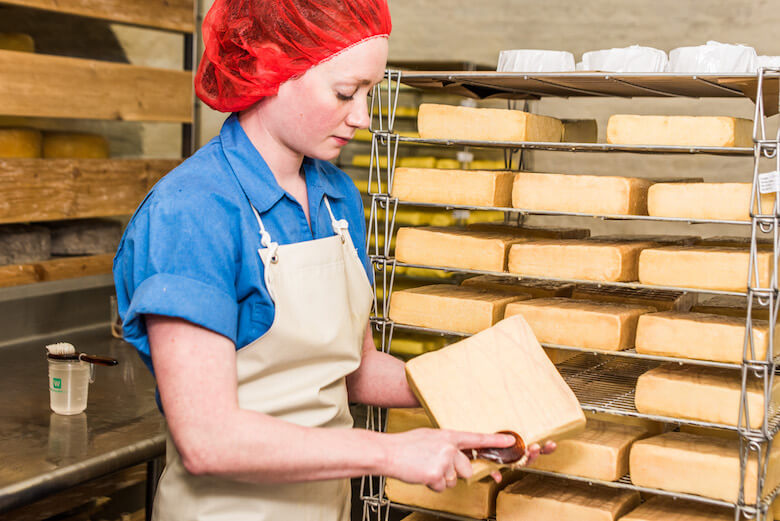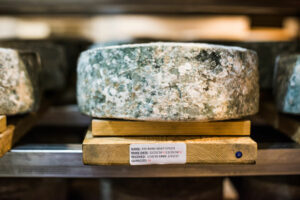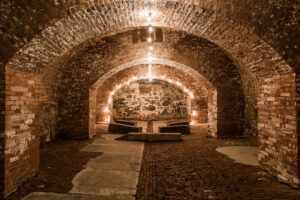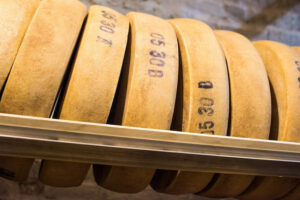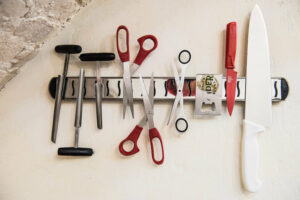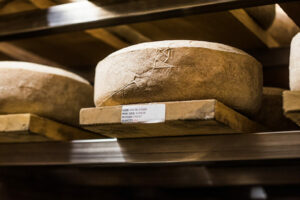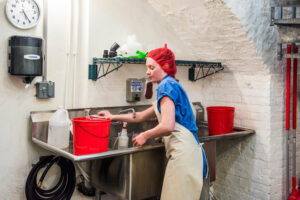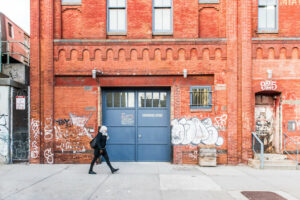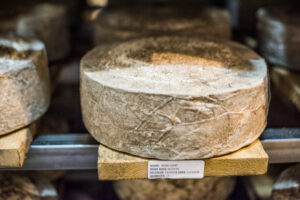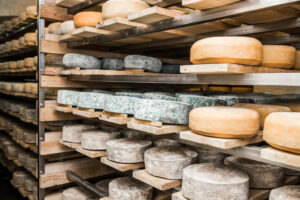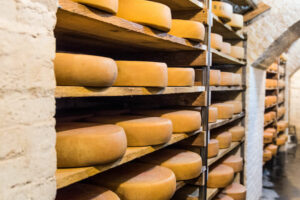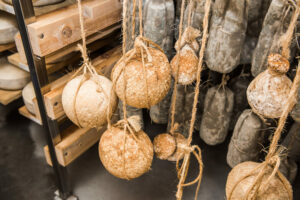
This story has a lot of moving parts. First there’s wine and cheese, sure. But it’s a special kind of wine, made in differents ways by a number of people, and then incorporated to one idea, thought up by some Brooklynites. The second set of parts include a number of different cheeses, made by several dairies then and aged in Crown Heights. The finished product is a mashup of trends, ancient techniques, Slow Food, like-minded producers.
So let’s meet the players in what they’re calling “Rinds and Skins.”
One year ago Monia Solighetto and Alessandro Trezza opened the natural wine bar Have & Meyer in Williamsburg. The couple, who come from Italy and have gelato in their blood (check out their first business, Albero dei Gelati, in Park Slope) wanted to serve wine made with minimal intervention. This can be done by limiting the number and kind of treatments applied in the vineyards and wineries. Going down this path inevitably leads to wine as it was made before the advent of chemical sprays or even stainless steel, to what is know commonly known as “orange” wine: which not made from oranges nor is it exactly orange. It’s more of an amber, the color white wine turns when exposed to oxygen.
In Italy this amber wine was made in clay amphorae buried in the ground to maintain temperature. Unlike most white wines today, which are made in anaerobic conditions and thus maintain a vibrant lemon color and fruit flavors, orange wines made in amphora can look anywhere from lightly caramelized to rusty and taste nutty and earthy.
Around these wines, Solighetto and Trezza wanted to serve local food and still honor their roots. “Globalization can be good,” says Trezza. “It’s two worlds getting together. The same values, two different countries and touched by one producer.”
So what goes better with wine than cheese?

The couple looked three miles south (and a couple blocks east from the Crown Heights location of their second Albero outpost) to Crown Finish Caves where Benton Brown and his wife, Susan Boyle, are using repurposed lagering tunnels in a old brewery to age or “finish” cheese, where it develops different kinds of rinds and flavors with time.
“I’d never heard of it,” says Brown, “but they asked me if I could age some local cheeses by washing them with orange wine.” He’d washed cheese with beer before, so why not wine?
Next came the fun part, picking the wines and cheese and deciding which would best work with each other.
The first round paired six cheeses with six wines. Soft cheeses like a goat cheese from Coach Farm in Hudson Valley was washed three times per week for two weeks with a 2015 “Anfora” from Francesco Cirelli made with the trebbiano d’Abruzzo.

At the other end of the spectrum, a raw sheep’s milk cheese from Grafton Village Cheese Company in Vermont was washed with the amphora-raised 2014 Serragghia made with the zibibbo grape. That cheese was washed three times a week for four months.
To say a cheese is washed is to overstate the process. The alcohol content of wine is high enough to kill the ambient bacteria in the caves that make the cheese what it is. Thus Brown and his team diluted the wine and apply the wash with a paint brush.
Back at Have & Meyer, customers can try the wines and cheese together in a flight. It’s a great opportunity to try some fairly rare wine and supremely unique cheese. Solighetto and Trezza, as they serve it, see the hands of people they all know: the cheesemakers in the Hudson Valley, the winemakers in Italy, the cheese finishers in Crown Heights and their own, the ones who brought all of them together.


